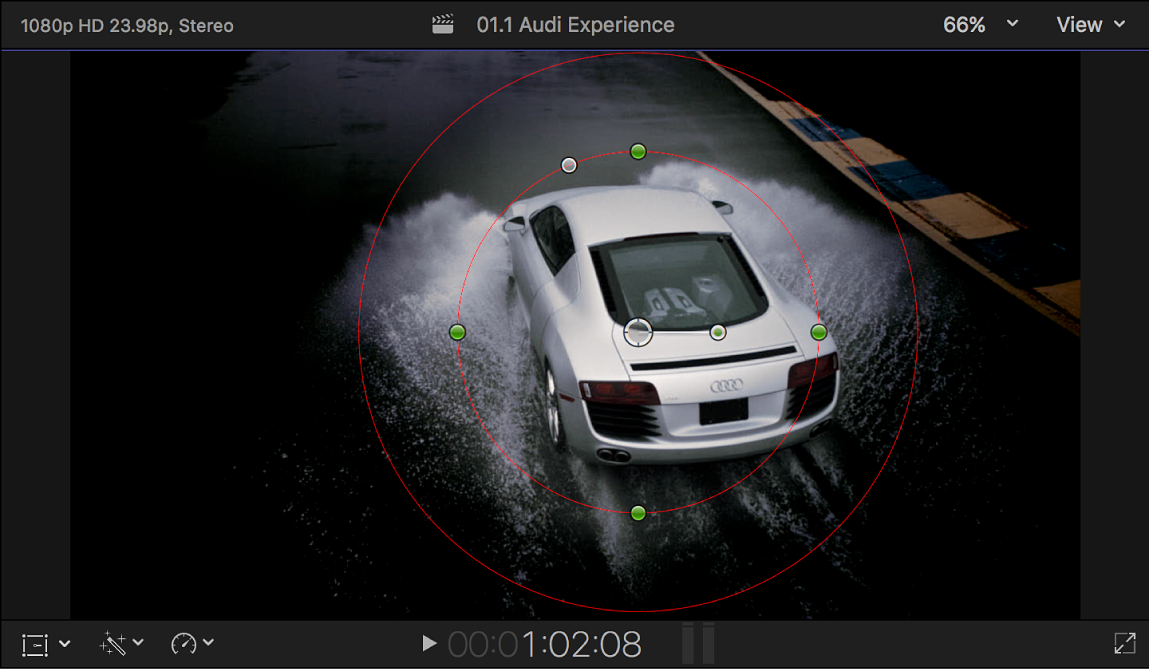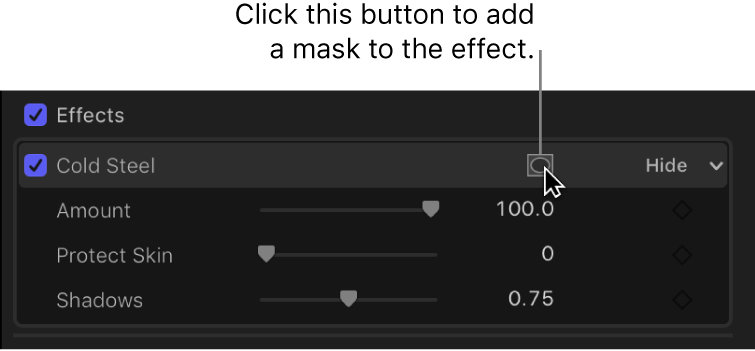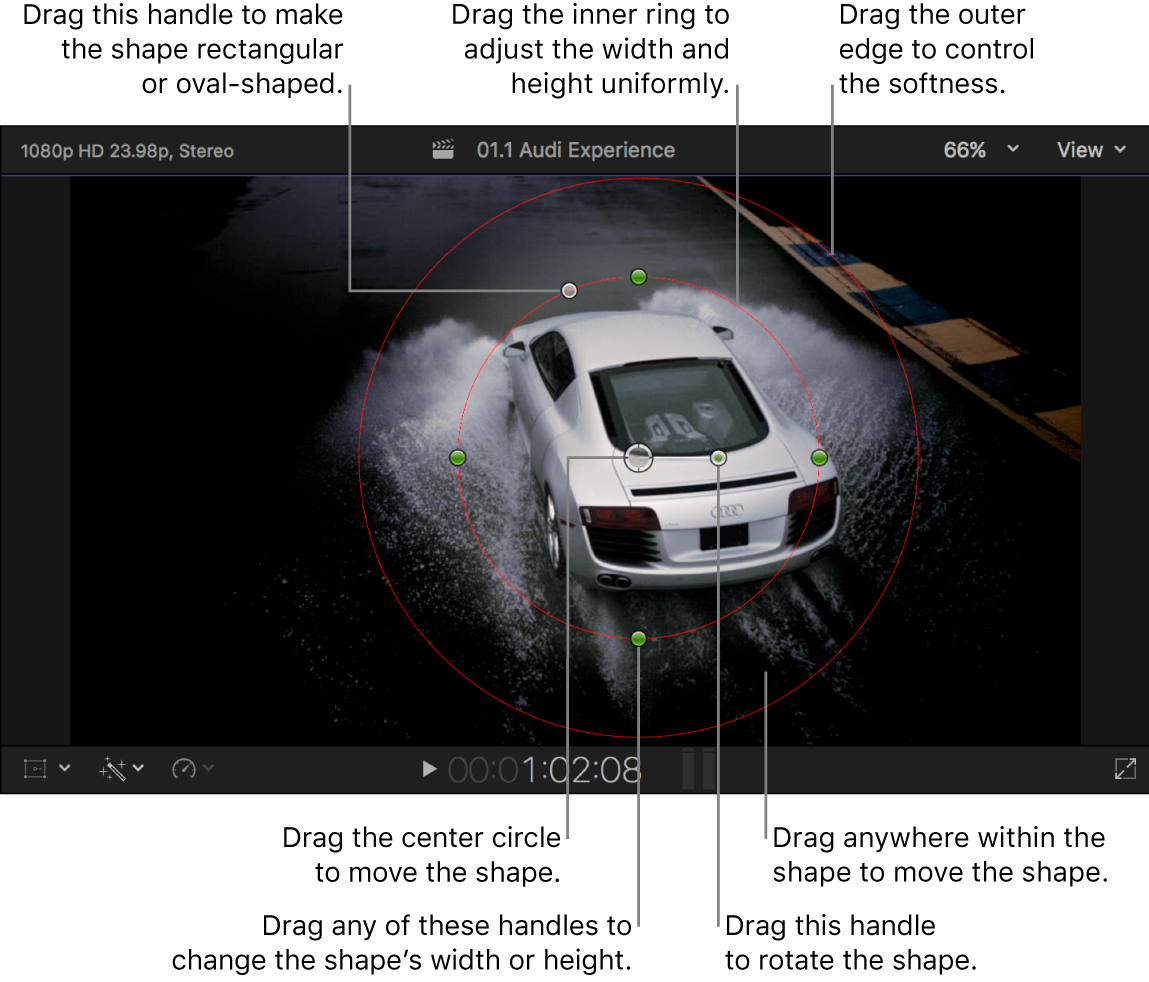Final Cut Pro User Guide
- Welcome
-
- What’s new in Final Cut Pro 10.5.3
- What’s new in Final Cut Pro 10.5
- What’s new in Final Cut Pro 10.4.9
- What’s new in Final Cut Pro 10.4.7
- What’s new in Final Cut Pro 10.4.6
- What’s new in Final Cut Pro 10.4.4
- What’s new in Final Cut Pro 10.4.1
- What’s new in Final Cut Pro 10.4
- What’s new in Final Cut Pro 10.3
- What’s new in Final Cut Pro 10.2
- What’s new in Final Cut Pro 10.1.2
- What’s new in Final Cut Pro 10.1
- What’s new in Final Cut Pro 10.0.6
- What’s new in Final Cut Pro 10.0.3
- What’s new in Final Cut Pro 10.0.1
-
- Intro to effects
-
- Intro to transitions
- How transitions are created
- Add transitions
- Set the default transition
- Delete transitions
- Adjust transitions in the timeline
- Adjust transitions in the inspector and viewer
- Merge jump cuts with the Flow transition
- Adjust transitions with multiple images
- Modify transitions in Motion
-
- Add storylines
- Use the precision editor
- Conform frame sizes and rates
- Use XML to transfer projects
-
- Glossary
- Copyright

Add a shape mask to a video effect in Final Cut Pro
You can define the area of a video effect, including a color correction, using the powerful shape-masking tool.
In the example below, you can apply an effect (such as Gaussian) to everything outside or inside the mask shape that you define.

You can add multiple masks to define multiple areas, and you can also animate the shapes so that they follow a moving object, or follow an area while a camera pans.
Add a clip to your Final Cut Pro project, and select the clip in the timeline.
Position the playhead in the timeline so that your clip appears in the viewer.
Add an effect to the timeline clip from the Effects browser.
Note: This includes the color correction effects, which you can apply from the Color category of the Effects browser or from the Color inspector. See Add color corrections in Final Cut Pro.
If the Video inspector isn’t already open, do one of the following:
Choose Window > Show in Workspace > Inspector (or press Command-4).
Click the Inspector button on the right side of the toolbar.

Click the Video button at the top of the inspector.

In the Effects section of the Video inspector, move the pointer over the effect name and click the Apply Effect Masks button
 .
.
Click the pop-up menu that appears and choose Add Shape Mask.
The onscreen controls appear in the viewer, superimposed over the video image. By default, the shape mask is set to a partially feathered circle in the center of the frame. The Shape Mask parameter appears in the effect’s section of the Video inspector.
Use the onscreen controls to adjust the mask shape.

Position the shape: Drag the center.
Adjust the shape’s width or height: Drag any of the four handles at the 90-degree points (top, bottom, left, or right) of the inner circle. You can hold down the Shift key while dragging to force all sides to scale proportionally.
Control the roundness of the shape: Drag the handle to the left of the inner circle’s top handle.
Rotate the shape: Drag the rotation handle (extending from the center).
Control the softness of the shape’s edge: Drag the outer circle. Setting the outer circle close to the inner circle creates a hard edge and an abrupt visual transition to the effects you apply, and dragging the outer circle away from the inner circle creates a softer edge and a more gradual transition.
To show or hide the mask’s controls, click the Shape Mask Onscreen Controls button
 to the right of the shape mask name in the mask list.
to the right of the shape mask name in the mask list.For more information about onscreen controls for shape masks, see Create simple shape masks in Final Cut Pro.
Note: At any time, you can view the mask alpha channel by clicking View Masks (next to the effect name). The mask’s alpha channel appears in the viewer. White indicates fully opaque mask areas, black indicates areas outside the mask, and levels of gray indicate transparent mask areas. See Add a color mask to a video effect in Final Cut Pro and Combine multiple effect masks in Final Cut Pro.